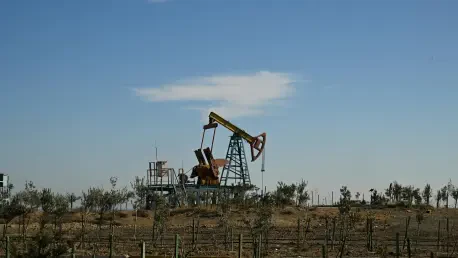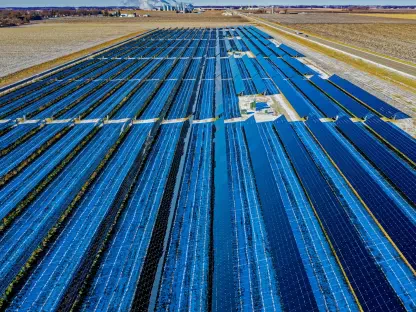Emerging from a pandemic, OPEC+ finds itself in a quandary, operating against a backdrop where oil demand exhibits erratic patterns. As the world’s economies attempt recovery, this major oil alliance increases its output, yet questions loom: Who will consume this surplus, and at what cost?
The Strategic Increase: Navigating Shaky Demand
OPEC+ sets its course to increase crude output by 548,000 barrels per day. This decision, imbued with cautious optimism, coincides with a gradually recuperating global economy. Nevertheless, the crux lies in whether this new supply will find its place amidst fluctuating demand. The strategic decision invites a thorough dissection of who will take up this excess supply and if this move genuinely resonates with marketplace demands. Such an analysis provides a window into understanding oil market complexities and predicting forthcoming developments.
Understanding Historical Shifts in the Oil Sector
To appreciate the present, one must venture into the past. OPEC+ had previously curtailed production to curb the price plummet during the pandemic. As recovery whispers grew louder, a gradual resurrection of production followed. This historical perspective illuminates OPEC+’s astute strategies, showcasing their ability to find equilibrium between sustaining oil prices and fostering economic prosperity. Consequently, these experiences cement the foundation for understanding OPEC+’s current maneuvers and underscore their pivotal role in market stewardship.
Analyzing Production Increases Amid Persistent Indecisiveness
The Motives Behind Surging Output
The reasoning for OPEC+ expanding oil production encompasses logical defenses yet is accompanied by intricate challenges. Their confidence rides on a “stable economic outlook and sound market fundamentals.” However, dissecting this declaration unveils disproportions. For instance, China, a colossal oil consumer, displays restrained demand growth, prompting scrutiny of the timing and necessity for increased production. Such conclusions, based on China’s modest import increase, align with skepticism regarding OPEC+’s optimistic portrayal.
Market Impacts: A Deep Dive
Unveiling the outcomes of OPEC+’s enhanced output taps into the intricacies of market behavior, notably within rapidly evolving Asian markets responsible for sizable portions of global seaborne crude. As production escalates, market equilibrium may face disturbances prompted by pricing shifts and geopolitical intricacies. Moreover, potential import cutbacks by powerhouses like China and India, spurred by heightened prices, signify imminent risks. This exploration offers an analytical view of emerging tendencies, elucidating the complex dynamics of harmonizing expanded supply and diversified demand.
Regional Nuances and Specific Market Challenges
Beyond broader market dynamics, OPEC+’s decision elucidates regional anomalies and market-centric challenges. Despite an uptick in Asian imports, the longevity of these shifts is clouded. Insights from market professionals reveal contrasting regional responses, noteworthy import adjustments by significant buyers, and the potential impact of technological progression. By unpacking these misconceptions, this narrative enriches the comprehension of regional influences over the global oil narrative, potentially unraveling OPEC+’s core stratagems.
Forward Momentum: Predicting Future Industry Evolutions
Looking to the horizon, several patterns promise to redefine the oil panorama. Technological breakthroughs in extraction and processing, paired with burgeoning renewable energy initiatives, herald transformative shifts. Economic theorists propose regulatory frameworks potentially reshaping market conditions, even challenging OPEC+’s traditionally significant sway. As the energy world tilts toward diversification, grasping these trends becomes crucial to predicting OPEC+’s adaptive strategies and relevance in a swiftly changing landscape.
Embracing Insights and Navigating the Future
Reflecting on OPEC+’s strategic alignment, pivotal insights emerge as businesses and legislators grapple with burgeoning challenges and avenues. The pursuit of agile tactics embracing market fluctuations and price sensitivity surfaces as fundamental. Reinforcing energy independence through diverse sources, upheld by real-time analytics, emerges as advantageous practice. With these insights at hand, stakeholders adopt nuanced methods to traverse a convoluted oil market, enlightened by both present insights and future anticipations.
Unraveling OPEC+’s Influence within the Global Energy Sphere
OPEC+’s production uplift illuminates wider themes of energy evolution, market volatility, and foresight strategy. Understanding this topic goes beyond immediate market shifts, sparking dialogues on energy sustainability, market adaptation, and enduring resilience planning. With this analysis completed, stakeholders recognize the importance of nimble innovation and ongoing vigilance, crucial in steering both short-term outcomes and enduring energy frameworks attuned to market demands and prospective aspirations.









